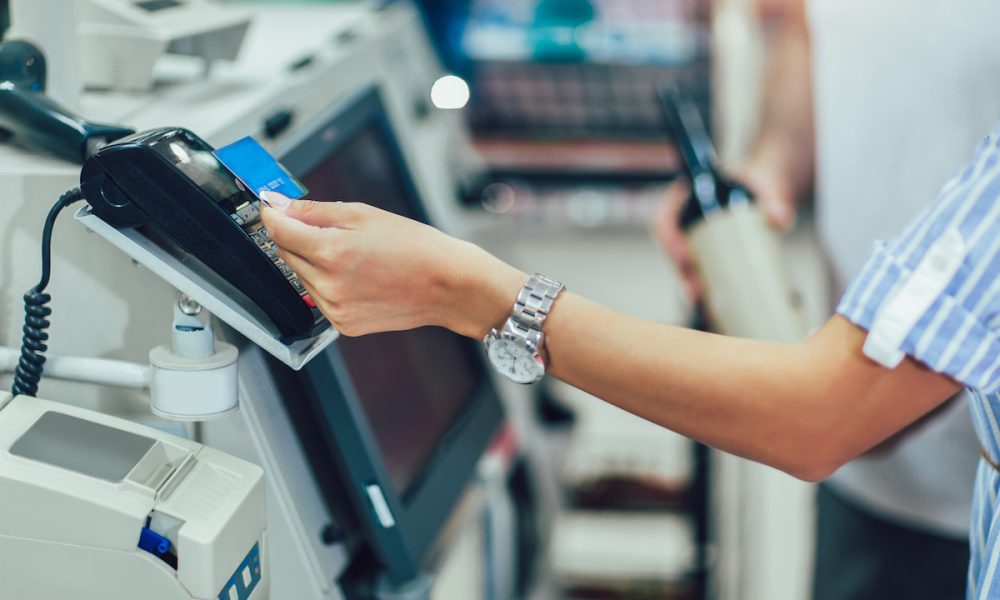As grocers look for more profitable ways to run their stores, some are going all-in on self-service checkout, while others are finding that the drawbacks of these technologies outweigh the benefits.
On the pro-self-service side, Kroger, the United States’ leading pure-play grocer, has been expanding its offerings both for online shoppers and for in-store customers. Last week, BrightDrop, a General Motors subsidiary, announced that the grocer is trying out its Trace Grocery electronic carts. These carts add a self-service component to curbside pickup, as consumers retrieve their own orders from them after a digital verification process.
Read more: Kroger Boosts eCommerce Efforts
Additionally, last month, the grocer kicked off a test of belted self-service at 20 stores in the Cincinnati area, making self-checkout more possible for larger purchases.
See more: Kroger Adds Belted Self-Checkout as Grocers Put Shoppers in Control
Similarly, grocery technology giant Instacart is investing in the future of self-service. The company announced last week the launch of smart carts, the Caper Cart, for pay-as-you-go self-checkout. Additionally, the eGrocery company also announced at the same time the launch of own-device Scan & Pay.
Read more: Instacart’s Connected Stores Blur the Lines Between In-Store and Digital Grocery Shopping
Research from the PYMNTS study “Today’s Self-Service Shopping Journey: The New Retail Expectation,” which was created in collaboration with Toshiba Global Commerce Solutions and drew from a survey of more than 2,000 U.S. adults, found that one in three consumers had used self-checkout options for their most recent in-store grocery purchase.
See more: Consumers Want Self-Service Checkout Options but Rarely Get to Use Them
Plus, the data revealed that the top reason consumers choose self-checkout is that they want a quicker purchasing experience, and the second most popular reason is that they do not want to wait in line.
Yet not all tests of self-checkout technology are yielding positive results. Wegmans, for instance, a regional supermarket chain with more than 100 East Coast stores, recently informed shoppers that it was shutting down its SCAN app, which offered scan-and-go own-device self-service.
The company cited losses related to the technology as the reason for the decision, with Fast Company attributing the move to theft and TechCrunch citing data that the app underperformed relative to competitors’ apps.
Read more: Wegmans Shuts Down Scan-and-Go Checkout Amid ‘Losses’
“SCAN users have told us they love the app and convenience it offers,” Wegmans said in a statement emailed to PYMNTS. “Unfortunately, the losses we are experiencing prevent us from continuing to make it available in its current state. We’ve made the decision to turn off the app until we can make improvements that will meet the needs of our customers and business.”
Similarly, eCommerce giant Amazon has hit pause on the rollout of its “Just Walk Out” self-checkout stores in Britain, with Business Insider reporting that existing Fresh stores have not been seeing positive results. Amazon didn’t respond to a request for comment from PYMNTS.
See more: Amazon Halts New UK Self-Checkout Grocers as Sales Fall Short
New PYMNTS Study: How Consumers Use Digital Banks
A PYMNTS survey of 2,124 US consumers shows that while two-thirds of consumers have used FinTechs for some aspect of banking services, just 9.3% call them their primary bank.
https://www.pymnts.com/consumer-insights/2022/checkout-experience-decisive-in-turning-deal-seekers-into-loyal-customers/partial/




